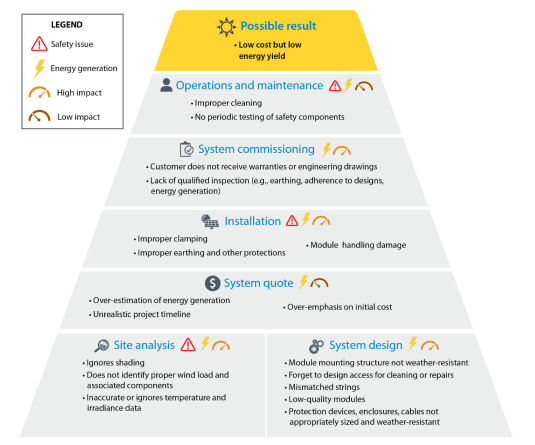Goal : High-Energy yield, low cost RTPV system
Note: Common problems occur at all stages of an RTPV system’s life, as indicated by the vertical levels of the pyramid. Issues that can result in a safety hazard or severe underproduction of energy are marked with colored icons (see legend)
The new data and analysis are used to identify a prioritized approach to addressing the most common RTPV issues. This approach takes the form of a quality-assurance framework comprising: 1) a Module Quality Assurance program, 2) a Safety Quality Assurance program, and 3) a Vendor Rating Framework (VRF). We propose that the development of a VRF is likely the next best step to focus initial efforts to improve quality and safety of RTPV installations in India. There are currently no mechanisms in place to monitor, evaluate, and rate vendors (engineering, procurement, and construction contractors or installers) in India. Establishing a VRF would help measure the quality of systems, as well as ensure compliance of those systems to established standards. As vendors and suppliers are held accountable for component and installation quality using this framework, a VRF would also provide an effective mechanism to link quality systems to market share by putting in place a procedure to evaluate, rate, and certify vendors based on their track record of designing, developing, and deploying systems.
 VOLT
VOLT
